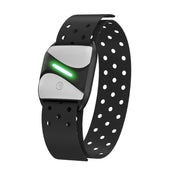Advance preparation
Before exercising, make sure that your machine has been adjusted to the best condition for you. As everyone's physique is different, even people of the same height may have different needs in the adjustment of seats and handlebars. So let's first take a look at the three key points that the squat assisted machine needs to adjust to ensure that you have the most personalized fit.
Seat Settings:
When choosing the seat setting that suits you, the most important thing is that you can feel comfortable support throughout the squat process. This means that the seat should be directly below you, just as you are sitting in a chair when you squat. It may take several tests to ensure that your settings are correct and that your seat is not too far from the front or back.
An important consideration is to make sure that your seat is adjusted back far enough so that your knees are consistent with your toes. When your knee is in front of your toes at the bottom of the squat, it puts unnecessary pressure on the knee. You can correct this problem by sitting back on your hips while squatting and making sure you don't lean too close.
Height Settings:
You can adjust the depth angle of the squat machine to 90 degrees, 60 degrees and 30 degrees. 30 degrees will provide you with the deepest range of motion, so if you are interested in squatting low, this will be your correct setting. Each angle corresponds to different holes in different machines to increase the depth of squats and the diversity of exercise programs.

Resistance Settings:
When using the upright trainer, there are three different resistance settings to choose from. Each resistance band adds about 22 pounds of resistance to your workout! You can choose the right resistance according to your fitness level and exercise goal. For most beginners, you can start with no resistance band or only one resistance band. The second and third resistance bands are very suitable for increasing strength and challenging your health, and are more suitable for intermediate or advanced users.
Full body exercises
The preparations are ready. Now let's take a look at one of the issues that everyone is most concerned about, how to use an upright row machine for full-body exercise. Here are four classic movements.1. Squat& Row
Find your starting position, core engagement, upright position. Make sure your middle foot is on the pedal. Shift your weight to your heels and sit your hips back as you squat. Continue to maintain the core and upright posture. When you stand up from a squat, push with your heels and pay attention to activating your hips. When you get up, start rowing, pull the barbell closer to your chest with your upper back, and keep your elbows close to your sides. Control returns to your starting position, which is the complete squat & row action! This action can effectively help us exercise our gluteus and quads. We can learn this action according to the following video.
2. Overhand Grip Rows
First of all, you need to hold the handlebar with your forehand (up or down-whichever is the most comfortable) with your palms facing down. Then maintain a good upright posture, straighten the elbows back and tighten the core to squeeze the shoulder blades together. Finally, return to the starting position with control, and the elbow bends slightly at the end of the motion. The goal of overhand grip rows is to exercise the latissimusdorsi, trapezius, rhomboids, posterior deltoid and biceps.
3. Underhand Grip Rows
Underhand rowing is similar to overhand rowing. But one difference is that when you hold the handlebar, your palm is not facing down, but up. In this exercise, you can choose to grip either the upper or lower handlebar, whichever way you feel more comfortable. You will find that the backhand grip makes it easier to keep your elbows close to your sides. Compared with the overhand grip, the underhand grip focuses more on exercising your latissimusdorsi and biceps.
4. Wide Grip Rows
Wide grip rows are when you put your hand on the side of the handlebar and complete rows from here. Because your elbows are naturally more open than regular backhand and forehand rowing, wide grip rows will focus more on the upper back, trapezius, rhomboid and deltoid posterior bundles.
If you are ready to sweat, please follow this 10-mins full body Row-N-Ride workout! You will learn how to combine the above actions into the systematic exercise!


